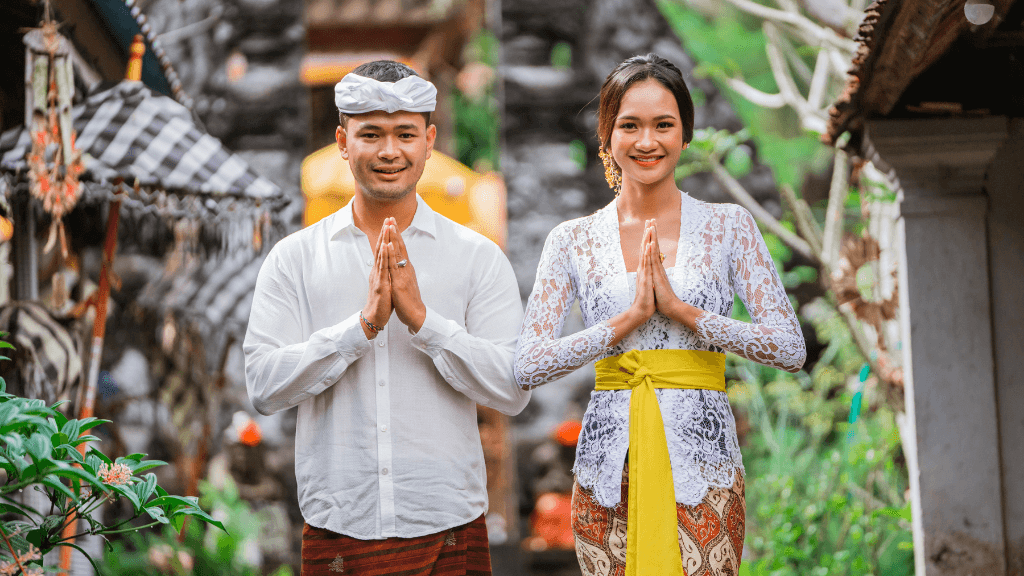Culture Circuits of Bali: Beyond the Selfie—Ceremonies, Kitchens, Rice Terraces
The morning air smells like incense and wet stone. Roosters have opinions. Somewhere behind a carved gateway, a family arranges little palm-leaf offerings—frangipani, a biscuit, a pinch of rice—while the street wakes to the rhythm of scooters and temple bells. Bali is photogenic, sure, but the real heartbeat hums underneath the postcards. This is a place where culture is lived in the open: ceremonies that reroute traffic, kitchens that swallow you whole with spice and laughter, and rice terraces that are both artwork and daily bread.
If you want to step in without stepping on toes, here’s the gentle way to do it—plus a simple path to stitch those moments into an effortless arc from village courtyards to Komodo’s dragon isles and the Gili slow-life exhale. When you’re ready to map it to dates, the Bali → Komodo → Gili route keeps the logistics tidy so curiosity can roam.

Temples & Ceremonies: How to Be a Welcome Guest (Not a Walking Tripod)
Bali’s ceremonies aren’t shows; they’re life, scheduled. If a procession spills through town, treat it like a privilege, not a photo op with traffic. Dress with care—shoulders covered, a sash around the waist, and a calm, observant presence. Follow your host’s lead on where to stand, when to move, when to simply let the moment pass through you. If you’re lucky enough to be invited beyond the gate, your job is to blend in and absorb—like a respectful shadow.
A guided day helps unlock context: who’s honouring whom, why the colours matter, where the gamelan sits in the swirl of it all. It’s the difference between “pretty” and “profound.” If you’d rather listen than Google, this culture-first itinerary times temple visits when they breathe, not when they’re crushed.
Kitchens Over Restaurants: Where Your Tastebuds Learn the Language
Bali speaks in turmeric-stained fingers and mortar-and-pestle beats. Market mornings are the opening act: chilies piled like confetti, greens with names you’ll forget but flavours you won’t. The best meals start with shopping trips and end with a table that looks like a festival.
If you get the chance, take a village cooking class—or better yet, cook in someone’s home. Learn the small things that change everything: how to coax sweetness out of shallots, when to add coconut milk so it comforts rather than smothers, why a squeeze of lime can quiet a noisy curry. And always ask about ceremonial dishes; they’re storybooks you can eat.
Rice Terraces: Walk the Lines, Read the Landscape
Those green steps aren’t just pretty—they’re a social agreement. Water temples, cooperative schedules, farmers who read weather better than any app. Walk the trails slowly, greet people, keep to the edges, and resist the urge to wander into fields. If you’re with a local guide, you’ll hear the subak system explained like a living organism—how water is shared, how planting is coordinated, why harmony here is a verb, not a slogan.
Golden hour paints everything unreal, but midday reveals the work: planting, weeding, mud-splashed laughter. Both are worth your time if you’re willing to look past the lens.
Little Etiquette That Makes a Big Difference
-
Dress with context. Light layers that cover more than they reveal—temples appreciate it, so do elders in markets.
-
Hands, feet, gates. Don’t step on offerings; don’t point feet at altars; accept blessings and smiles with both hands.
-
Photo manners. Ask first, especially with artisans and ceremonies. If in doubt, put the camera down and watch longer.
-
Money talk. Bargaining is fine; meanness isn’t. The goal is fair, not lowest. A calm smile goes further than a hard edge.
-
Learn three words. “Permisi” (excuse me), “matur suksma” (thank you, Balinese), “pagi” (good morning, Indonesian). Doors open.

Micro-Itineraries That Feel Like Real Life
Village Morning → Temple Noon → Sunset Walk
Start in a market, wander into a kitchen, then dress for a temple visit when the light turns honey. End with a rice-terrace footpath, moving slow enough to hear the river in the paddies.
Artisans & Coffee → Family Compound Lunch → Gamelan Evening
Visit wood-carvers or painters, talk process over a local brew, then share a family-style lunch and finish with a music or dance rehearsal. The rehearsals are where the sparkle meets the sweat.
Ceremony Day (if it finds you)
If a ritual crosses your path, let it rearrange your plan. Culture is the main event, not an obstacle; the detour is the story you’ll remember.
Why Guided Days Multiply the Magic
You can explore Bali solo and do beautifully. But a good guide acts like a tuning fork—quietly bringing the day into resonance. They unlock courtyards that aren’t on maps, time arrivals so you meet grace rather than queues, and translate things you’d miss even with a week of reading. Pair a couple of guided days with your own meanderings and you’ll get both the intimacy and the depth. If that balance sounds ideal, the Bali to Beyond journey strings culture days with Komodo cruising and a Gili wind-down so the whole arc feels purposeful rather than patched together.
Linking the Islands: One Arc, Three Tempos
Bali (Culture & Rhythm): ceremonies, kitchens, terraces—texture and ritual.
Komodo (Wild & Wide): boat days, pink beaches, viewpoints, dragons—from shrine bells to sea breezes without whiplash.
Gili (Slow & Salt): bikes instead of cars, reef time measured in “one more snorkel,” sunsets that hum instead of shout.
Think of it like a three-course meal. Bali lays the table and tells the family story; Komodo brings the spice and spectacle; Gili is the unhurried dessert you didn’t know you needed. The trick is sequencing and pacing—built into the Bali → Komodo → Gili route so the hand-offs feel seamless.
Pack Light, Engage Deep
-
Light, respectful layers for temples and sun.
-
A scarf or sash earns you instant “gets it” points at ceremonies.
-
Small notes for markets and village stops; cash still smiles brightest in the right moments.
-
Curiosity as standard kit—ask, listen, taste, repeat
A Note on Good Tourism
Culture isn’t a backdrop, it’s a home. If you eat in family kitchens, buy from artisans, and move with courtesy, your presence does more than float on the surface. It supports the very things you came to find.
Ready to Thread It Together?
If the idea of ceremonies in the morning, rice terraces by afternoon, and Komodo sunsets two days later feels like your kind of “everything, but gracefully,” the Bali to Beyond journey lays out the path—dates, details, and an easy flow from culture to coast.





